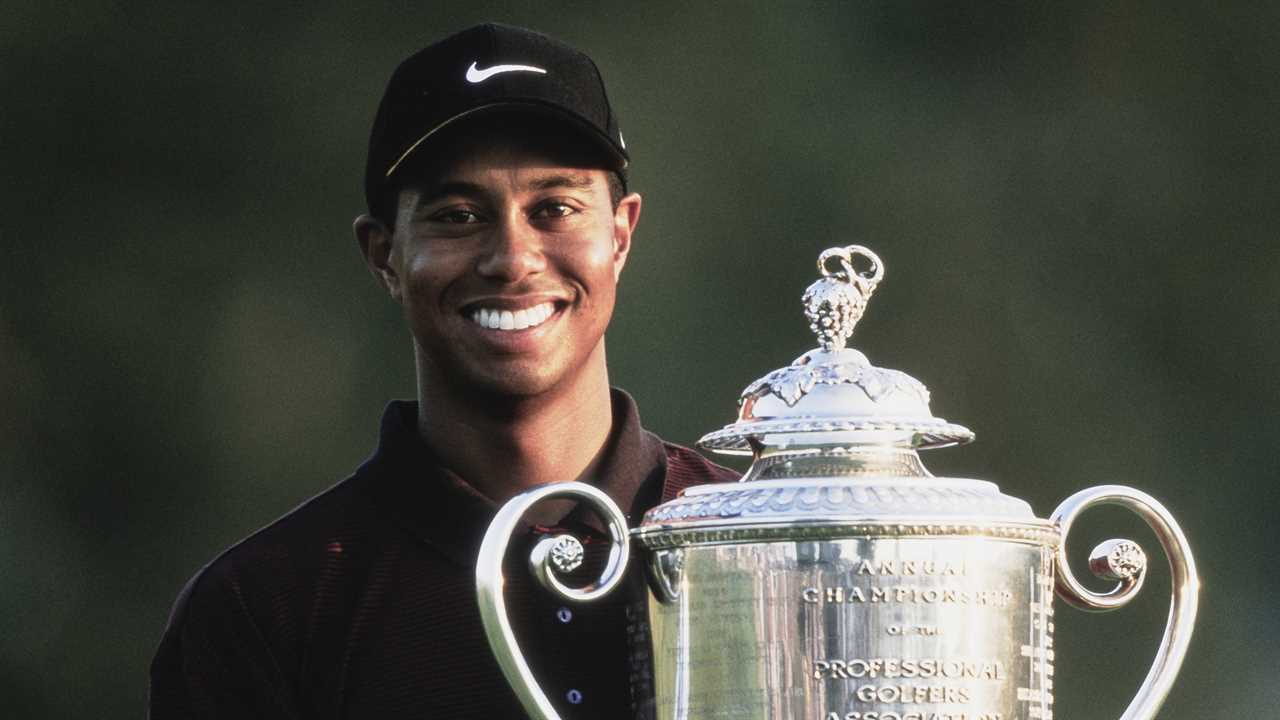Tiger Woods has always played to win. Since turning professional in 1996, he has won 82 tournaments, including 15 major championships. Perhaps, more astonishing than the victories and majors is the 142-event made cut streak that lasted over a seven-year period from 1998 to 2005, when he was the most dominant golfer that the game has ever seen.
Woods never said he was the greatest. He didn’t need to. “There is no sense in going to a tournament if you don’t believe that you can win it,” he once said.
Yet, coming into the PGA Championship at the Valhalla Golf Club in Louisville, Kentucky, Woods was circumspect about his chances of hoisting his fifth Wanamaker Trophy. Asked about the state of his game, he admitted that he was rusty and that the barrage of injuries had taken a toll on his body. “I can still hit shots,” he said on Tuesday. “It’s getting around is more of the difficulty that I face day-to-day and the recovery of pushing myself either in practice or in competition days.”
When the tournament began on Thursday, Woods, who was making his 23rd appearance in the PGA Championship, performed like the part-time player that he has become over the last several years. On his way to a 1-over par 72, the 48-year-old World Golf Hall of Famer hit a smattering of good shots but hardly kept pace in a first round that saw a record 64 players shoot under par scores.
“It’s just the competitive flow,” he said after the round. “It took me probably three holes to get back into competitive flow again and get a feel for hitting the ball out there in competition, adrenaline, temperatures, green speeds. These are all things that normally I adjust to very quickly, and it just took me a few holes to get into it.”

David Cannon/Getty Images
By Friday afternoon, the tournament had been temporarily upstaged by the early morning arrest of Scottie Scheffler, the game’s No. 1 ranked player, for allegedly disobeying a police officer’s order at the entrance to the Valhalla Golf Club. Looking invincible like the Woods of old, Scheffler settled down after the shock of being handcuffed and hauled off to jail to shoot a 5-under par 66 to go into the weekend with a chance to win his second major of the year after taking the Masters last month. As Scheffler went off to answer questions about spending time in a Louisville holding cell, Woods was starting his round and would need a good one to avoid missing just his 15th cut in 93 major appearances.
Starting his second round two shots off the projected cut of 1 under par, Woods went seven over par in his first four holes to guarantee that he would miss the cut. It’s hard to imagine a worst scenario for a player already battling competitive rust and old age in a game dominated by much younger players. Here he was looking ahead to the next tournament, the next opportunity to show that he could still play at next month’s U.S. Open at Pinehurst, but stuck for five hours on a golf course where he had solidified his legend 24 years earlier in an epic duel with Bob May at the 2000 PGA Championship.
Back then when Woods was in the morning of his career, he turned the Jack Nicklaus-designed Valhalla Golf Club into a theater with a two-act play and May as his benevolent antagonist. In the final round in 2000, they matched each other shot for shot, creating a drama unprecedented in televised golf history. Then in the three-hole aggregate playoff, Woods survived to win by one stroke. That victory at Valhalla was the third leg of the Tiger Slam, which climaxed when Woods won the 2001 Masters.
But these are different times in the game of golf. In 2000, the PGA Tour was in the beginning of a period of monumental growth as an outsized talent with a mixed racial heritage was transforming what had long been identified as a country club sport played mostly by white people. To many, Woods was the game and the PGA Tour was his home. Now, no longer the masterful player capable of holding your attention for hours on Sunday with his feats of excellence, Woods has become a senior statesman in the game and a defender of what he has helped to build in the sport over the last 30 years.
As the biggest name on both the PGA Tour Policy Board and the PGA Tour Enterprises Board, Woods has become one of the most powerful figures in negotiations between the PGA Tour and Saudi Arabia’s Public Investment Fund (PIF), which funds LIV Golf. During what is turning out to be a slow and painful exit from competitive golf, Woods is helping to set the direction of the future of the game.
At Valhalla, he took on his new role.
“We’re trying to make the PGA TOUR the best it can be day-in and day-out,” he said Tuesday. “That’s one of the reasons why we have arguments and we have disagreements, but we want to do what’s best for everyone in golf and the TOUR.”
About the PGA Tour’s negotiations with LIV Golf, he said, “we’re making steps and it may not be giant steps, but we’re making steps.”
Easily missing the cut at the PGA Championship after a six-over par 77 on Friday, Woods didn’t take any steps toward reclaiming a place at the top of the pecking order of the best players. At Valhalla, he still commanded the biggest galleries like he did when he won there 24 years ago. Back then, he was looked upon by many as the savior of the game, who gave an inspiring and life-changing sermon on Sunday afternoons with his golf clubs.
That seemingly ubiquitous presence on Sundays is waning, but his star still shines brightly over these players still playing on the weekend on a stage he set for them.
-----------------------
By: Farrell Evans
Title: Tiger Woods missed the PGA Championship cut but his legacy played on
Sourced From: andscape.com/features/tiger-woods-missed-the-pga-championship-cut-but-his-legacy-played-on/
Published Date: Sat, 18 May 2024 16:07:58 +0000
Did you miss our previous article...
https://ballerawards.news/sports/three-olympic-allaround-champions-headline-us-classic-field






